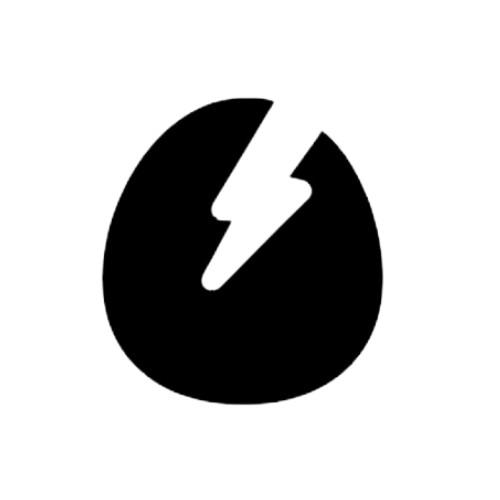What is POC (Proof of Concept)?
Proof of Concept (POC) is a process used to validate an idea by testing its feasibility and identifying any potential flaws. POC can be a quick and inexpensive way to determine if an idea is worth pursuing or not. A POC typically involves creating a rough sketch, an initial experiment, or a basic model of the idea to test its fundamental concept.
The main benefit of a POC is that it allows you to test the feasibility of your idea and identify any potential flaws before investing significant time and resources into its development. By conducting a POC, you can save time and money by validating the concept early in the process and making necessary adjustments.
To determine whether a POC is necessary, ask yourself this question: can we build it? Not all companies need a POC. For example, if you are trying to sell vintage glasses to a new market, then a POC is not required. However, if you are creating a new product, a POC is crucial to ensure that the idea is feasible, and any potential flaws are identified before investing resources.
Suppose you have an idea to create a medical device that can extract a blood drop and analyse it more efficiently. To bring this idea to life, you would first start with a proof-of-concept (POC) experiment to analyse a blood drop and test the feasibility of the idea. This would involve running a basic experiment to figure out if a blood drop can be analysed.
What is Prototype?
A Prototype is an early version of a product that is created to test and refine its features and functionality. Unlike a POC, a prototype is a more advanced version of an idea that is intended to be closer to the final product. Prototyping is a valuable process that can help you identify design flaws, user experience issues, and other problems before the final product is launched.
The main benefit of a Prototype is that it allows you to test and refine the product's features and functionality before launching it. This helps you create a more user-friendly and efficient product, which can lead to higher user satisfaction and increased revenue.
To determine whether a prototype is necessary, ask yourself this question: how do we build it? Google, for instance, tested an early version of a self-driving car on campus with their employees. This allowed them to identify design flaws, user experience issues, and other problems before launching the final product.
In the blood drop example, once the POC is completed, you would move on to creating a prototype. In the case of the blood extraction device, the prototype would be a bulky and functional drop-taker instrument. While it may not look aesthetically pleasing, it would allow you to test the product's features and functionality and identify any design or technical issues that need to be addressed before launching it to the market.
What is MVP (Minimum Viable Product)?
A Minimum Viable Product (MVP) is the most basic version of a product that can be launched to the market. MVP is a product that includes only the essential features required for it to function and provide value to users. The main goal of an MVP is to launch a product quickly and inexpensively to test its market viability and gather user feedback.
The main benefit of an MVP is that it allows you to test the market viability of your product before investing significant time and resources into its development. An MVP helps you validate your idea, understand user needs and preferences, and make necessary adjustments before launching the final product.
To determine whether an MVP is necessary, ask yourself this question: will people buy it? An MVP is designed to test the market viability of your product before investing significant time and resources in marketing it. Launching a programme that gives a few customers early access to your product is a perfect example of MVP.
In the context of the blood drop analysis example, after refining the product with the Prototype, you would move on to creating an MVP. In this case, you would create a more refined version of the product to be tested with customers to gauge their interest. The MVP would be the simplest possible customer-ready version of the product, and it would be designed to test the market viability of your idea before investing significant time and resources into its development.
In conclusion, understanding the differences between POC, Prototype, and MVP can help you streamline your product development process, reduce costs, and increase your chances of success. By conducting a POC, creating a Prototype, and launching an MVP, you can validate your idea, identify flaws, and create a user-friendly and efficient product. At Creo Incubator, we offer entrepreneurship courses that can help you learn more about product development, market research, and business strategy. Join our courses today to take the first step towards turning your idea into a successful business.
Proof of Concept (POC) is a process used to validate an idea by testing its feasibility and identifying any potential flaws. POC can be a quick and inexpensive way to determine if an idea is worth pursuing or not. A POC typically involves creating a rough sketch, an initial experiment, or a basic model of the idea to test its fundamental concept.
The main benefit of a POC is that it allows you to test the feasibility of your idea and identify any potential flaws before investing significant time and resources into its development. By conducting a POC, you can save time and money by validating the concept early in the process and making necessary adjustments.
To determine whether a POC is necessary, ask yourself this question: can we build it? Not all companies need a POC. For example, if you are trying to sell vintage glasses to a new market, then a POC is not required. However, if you are creating a new product, a POC is crucial to ensure that the idea is feasible, and any potential flaws are identified before investing resources.
Suppose you have an idea to create a medical device that can extract a blood drop and analyse it more efficiently. To bring this idea to life, you would first start with a proof-of-concept (POC) experiment to analyse a blood drop and test the feasibility of the idea. This would involve running a basic experiment to figure out if a blood drop can be analysed.
What is Prototype?
A Prototype is an early version of a product that is created to test and refine its features and functionality. Unlike a POC, a prototype is a more advanced version of an idea that is intended to be closer to the final product. Prototyping is a valuable process that can help you identify design flaws, user experience issues, and other problems before the final product is launched.
The main benefit of a Prototype is that it allows you to test and refine the product's features and functionality before launching it. This helps you create a more user-friendly and efficient product, which can lead to higher user satisfaction and increased revenue.
To determine whether a prototype is necessary, ask yourself this question: how do we build it? Google, for instance, tested an early version of a self-driving car on campus with their employees. This allowed them to identify design flaws, user experience issues, and other problems before launching the final product.
In the blood drop example, once the POC is completed, you would move on to creating a prototype. In the case of the blood extraction device, the prototype would be a bulky and functional drop-taker instrument. While it may not look aesthetically pleasing, it would allow you to test the product's features and functionality and identify any design or technical issues that need to be addressed before launching it to the market.
What is MVP (Minimum Viable Product)?
A Minimum Viable Product (MVP) is the most basic version of a product that can be launched to the market. MVP is a product that includes only the essential features required for it to function and provide value to users. The main goal of an MVP is to launch a product quickly and inexpensively to test its market viability and gather user feedback.
The main benefit of an MVP is that it allows you to test the market viability of your product before investing significant time and resources into its development. An MVP helps you validate your idea, understand user needs and preferences, and make necessary adjustments before launching the final product.
To determine whether an MVP is necessary, ask yourself this question: will people buy it? An MVP is designed to test the market viability of your product before investing significant time and resources in marketing it. Launching a programme that gives a few customers early access to your product is a perfect example of MVP.
In the context of the blood drop analysis example, after refining the product with the Prototype, you would move on to creating an MVP. In this case, you would create a more refined version of the product to be tested with customers to gauge their interest. The MVP would be the simplest possible customer-ready version of the product, and it would be designed to test the market viability of your idea before investing significant time and resources into its development.
In conclusion, understanding the differences between POC, Prototype, and MVP can help you streamline your product development process, reduce costs, and increase your chances of success. By conducting a POC, creating a Prototype, and launching an MVP, you can validate your idea, identify flaws, and create a user-friendly and efficient product. At Creo Incubator, we offer entrepreneurship courses that can help you learn more about product development, market research, and business strategy. Join our courses today to take the first step towards turning your idea into a successful business.
Write your awesome label here.
Never miss our news!
Thank you!
Get updates on live streams, news and more right in your mailbox.



